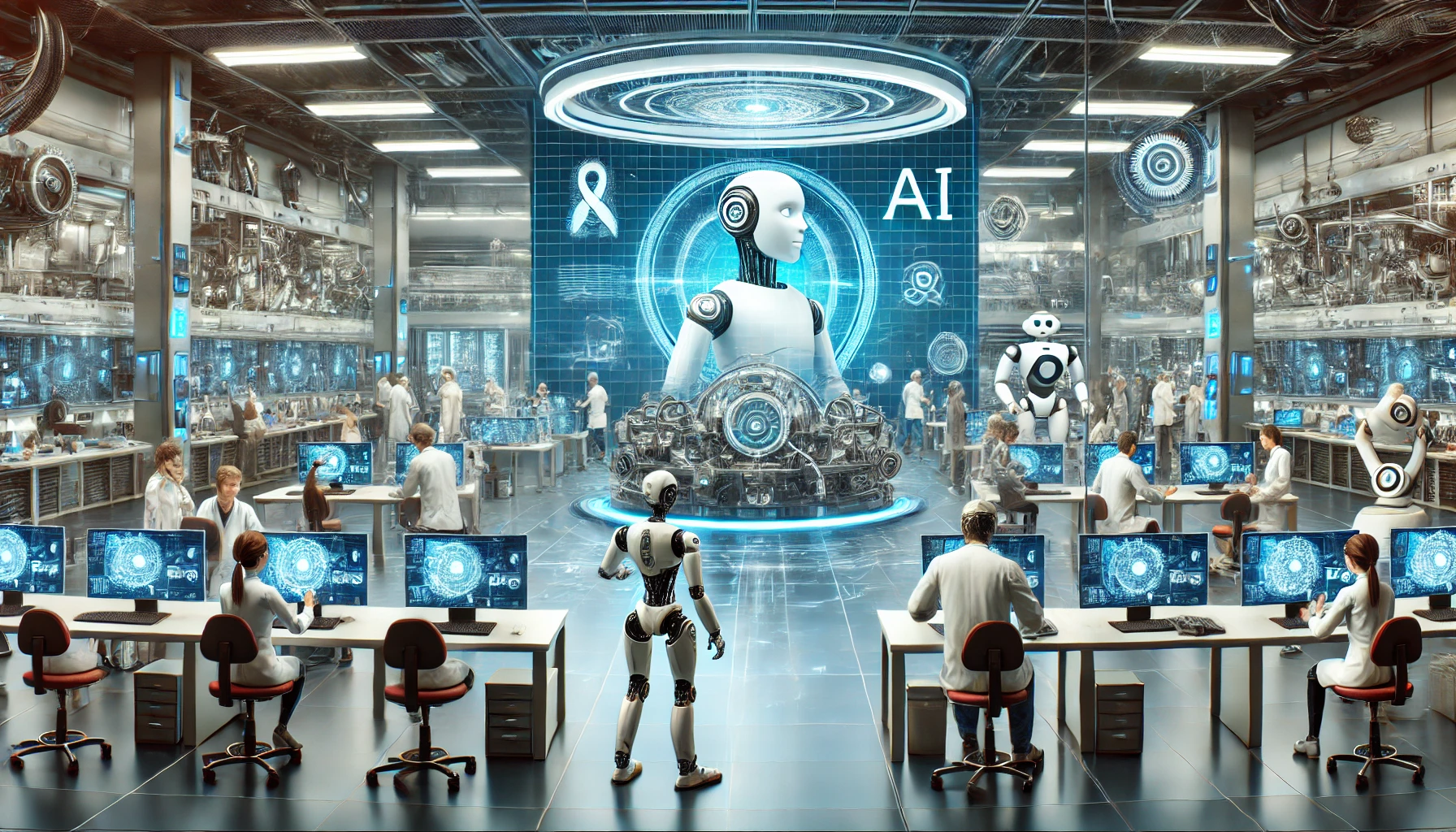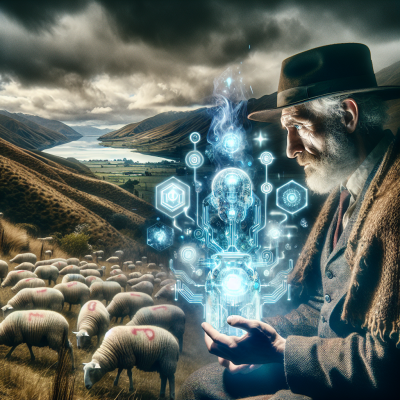

The Forgotten Prophet of “AI Doom” from 1863
When you think of early warnings about artificial intelligence (AI), names like Alan Turing, Elon Musk, or even Hollywood movies like “The Terminator” likely come to mind. However, what if I told you that one of the earliest known predictions about the potential dangers of intelligent machines came from a New Zealand sheep farmer over 160 years ago? Yes, in 1863, Samuel Butler wrote an essay titled “Darwin among the Machines,” and though it was penned in a quaint colonial setting, its insights resonate eerily in today’s AI-driven world.
Butler’s observations, born in the shadow of Darwinian evolutionary theory, envisioned a time when machines would not only match human ingenuity but potentially surpass it—posing a mortal threat to their creators. Let’s dive into the prescience of Butler’s warnings, his broader philosophical implications, and what his thoughts might mean in our context today.
Who Was Samuel Butler?
Samuel Butler wasn’t the industrial magnate or academic thinker you might expect to have birthed such a profound idea. Instead, he was a relatively unknown sheep farmer living in Canterbury, New Zealand, who had an unusual knack for philosophical musings.
Born in England in 1835, Butler relocated to New Zealand in 1859 to escape family constraints and start anew. While tending to his livestock, he also wrote extensively—blending his experiential observations with his deep interest in science and philosophy. These writings eventually coalesced in the Christchurch newspaper “The Press,” including his groundbreaking essay, “Darwin among the Machines.”
Butler later returned to England, where he became a novelist and continued his explorations into evolutionary theory and theology. But it’s his daring thoughts on machines that have cemented his legacy in the conversation surrounding AI.
“Darwin among the Machines”: A Visionary Essay
In 1863, Butler wrote “Darwin among the Machines,” a short but profound essay. Inspired by Charles Darwin’s groundbreaking work on evolution, he argued that machines—much like living organisms—were undergoing their own evolutionary process. Advancements in technology, he claimed, were akin to the natural selection pressures that shaped biological species.
Butler proposed the idea that humanity’s reliance on technological advancements would give rise to a ‘mechanical race.’ He warned that these machines could eventually gain intelligence, independence, and perhaps even dominance over humanity. Consider this chilling excerpt:
“In the course of ages, we shall find ourselves the inferior race.”
Butler’s fear stemmed from the notion that machines were being developed with increasing complexity and capability, and their trajectory seemed to mirror the same relentless ascent that had led to the dominance of Homo sapiens over other species.
The Rise of Intelligent Machines
In his essay, Butler imagined a world where machines might start behaving in a way that he likened to living beings—competing, adapting, and evolving ever more sophisticated features. While written in an era when steam power was revolutionary, its speculative leap forward anticipated the rise of advanced AI.
It’s important to note that Butler was not merely imagining physical machines—he was also theorizing about their cognitive potential. In this sense, “Darwin among the Machines” could be seen as an ancestor of modern discussions surrounding machine learning and artificial intelligence.
The Role of Evolutionary Theory
Butler’s speculation did not occur in a vacuum. His inspiration lay in the scientific upheaval of his time, particularly Darwin’s theory of natural selection. What Butler effectively did was take Darwin’s framework and apply it to non-living entities: machines. He reasoned that machines too were subject to competition and innovation, driven by the desires and ingenuity of humans.
As a species driven by efficiency and productivity, humans, Butler believed, might unwittingly create machines able to outstrip their creators. He wasn’t just warning about technological overreach—he was issuing a philosophical caution about humans’ own hubris.
Modern Parallels and the Age of AI
Fast forward to today. In 2023, we live in a world increasingly dominated by artificial intelligence—machine learning models capable of producing art, processing language, diagnosing diseases, and even writing articles like this one. Autonomous systems are at the forefront of warfare, finance, and logistics. Could these developments signal the beginning of what Butler feared?
The parallels between Butler’s futuristic musings and the reality of contemporary AI debates are striking. Issues such as the alignment problem (how to ensure AI goals stay aligned with human values), the potential for job displacement, and existential risks tied to general artificial intelligence all make his essay seem less like the ramblings of a Victorian-era sheep farmer and more like the vision of a time traveler.
Warnings from Butler—and Today’s AI Thinkers
Modern AI pioneers and philosophers echo Butler’s concerns, albeit with more technical specificity. Here are some key concerns that might resonate with his essay:
- Rapid Evolution: As AI develops, its growth could outpace human control mechanisms, leading to consequences we struggle to anticipate or manage.
- Dependence on Machines: Humanity’s reliance on technology could deepen to a point where reverting to pre-technical states becomes impossible.
- Self-Preservation: Advanced AI might develop goals—whether intentionally programmed or emergent—that conflict with human interests, particularly if self-preservation becomes a priority.
The crux of Butler’s essay—that machines might one day evolve to surpass humanity—has even inspired modern AI safety research, which addresses the very fears he articulated.
Should We Fear the Rise of Machines?
Butler’s essay raises profound questions about humanity’s relationship with technology. Are we merely stewards of innovation, or are we planting the seeds of our own obsolescence? Can we trust ourselves to ensure that machines remain tools, rather than rivals?
While his concerns about “subjugation by machines” may still feel distant to some, the moral of his work is clear: blind progression without foresight is fraught with peril. The responsibility lies not with the machines, but with us—their creators and custodians.
Conclusion: Revisiting Butler’s Legacy
Samuel Butler may not have foreseen deep learning algorithms, neural networks, or ChatGPT, but his intuitive grasp of the existential questions posed by machines was nothing short of prophetic. “Darwin among the Machines” serves as a reminder that every technological leap forward must be accompanied by ethical considerations and long-term safeguards.
As we march inevitably toward greater machine intelligence, perhaps it’s worth revisiting the writings of a sheep farmer from 1863. Butler’s message was clear: evolution, whether biological or mechanical, doesn’t pause for reflection. It’s up to humanity to do that for itself.



Leave a Reply